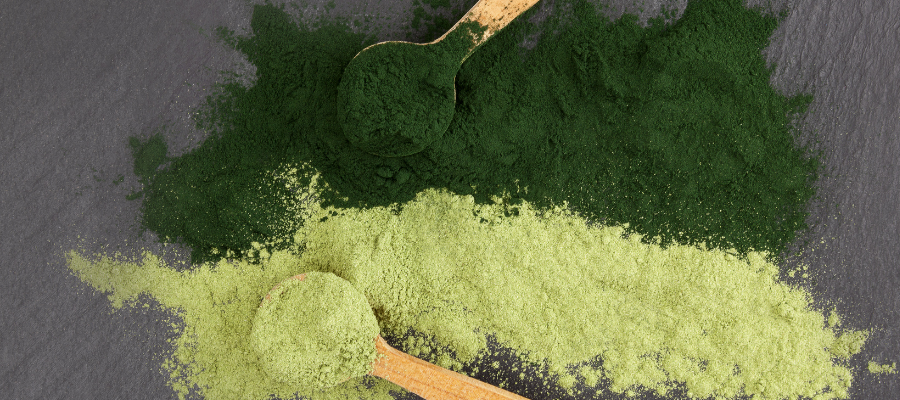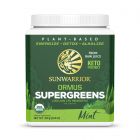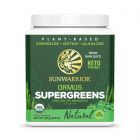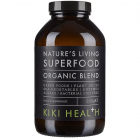Greens Powders: Is the hype worth it?
- By Bea Recuerdo (BSc)
- Mar 28, 2022

Eating vegetables to maintain good health is no secret in life. Ideally, nutritionists, doctors, and other health care professionals would agree that you need to eat vegetables to keep you healthy since they're high in vitamins, minerals, antioxidants and provide additional health advantages. (Source: Hindawi)
But aside from fresh vegetables, something else is becoming interestingly popular in diet and health, and these are Greens Powders.
Greens Powders have caught the attention of health-conscious individuals and maybe even you! A lot of questions are being asked about it, such as, "What are Greens powders?", "Is it worth it?", "What's the hype all about?"
So, in this blog, we're going to look into what Greens Powder is, and let us help you answer these questions.
Let's just jump right into the first question: "What are Greens Powders?"
Greens Powders are either a combination of grasses, dark green leafy vegetables, or algae that act as a dietary supplement for those who don't get enough "greens" and vegetables in their diet. Ideally, Greens powders help you meet the nutrient needs that you get from eating vegetables but should not be a 100% substitute for vegetables in the diet.

Okay, so what are Greens Powders made of?
As mentioned earlier, green powders are usually made of either the combination of grasses, algae, or dark green leafy vegetables. Here is what companies use and the benefits we get from these ingredients:
1. Grasses
If you ever visited a juicing store or stall at a farmer's market, you would have heard of wheatgrass and barley grass. They are usually consumed as a condensed shot or added to a blended juice or smoothie.
Barley grass and wheatgrass are harvested from the young plants and freeze-dried (spray-dried in reality, they don't freeze-dry it) into a powder. Usually, they're a good source of fiber, vitamin C, and chlorophyll, which may have antioxidant roles in the body.
2. Algae
Chlorella and Spirulina are the two microalgae superfoods popularly known in the market and are added in green powders. Both were found to contain a diverse range of nutrients that may be able to support human life in the event of a worldwide food shortage.
It contains a range of vitamins and minerals and several antioxidants, and one of these is chlorophyll. This is the pigment that all plants use to produce food through photosynthesis, remember biology? It may provide antioxidant impacts in the body, helping to reduce tissue damage and regulate inflammation.
3. Dark, leafy greens
Green vegetables include a variety of substances such as flavonoids, tannins, and other phenolic compounds that are thought to have an essential role in health management, particularly in the prevention of chronic human diseases such as cardiovascular disease, cancer, and degenerative disorders. (Source: Science Direct)

Popular dark leafy greens used in Greens powders are:
1. Kale
β-carotene, vitamin C, calcium, and dietary fiber are abundant in kale (Brassica oleracea). It's usually taken as a drink or a dry powder to get your daily dose of nutrients. It has been studied to positively affect blood cholesterol, blood sugar, and blood pressure. Mainly this is because it contains polyphenols, soluble fiber, potassium, and calcium that may play critical roles in those effects. (Source: JNDC).
2. Spinach
Spinach (Spinacia oleracea) is a cool-season annual green leafy vegetable that grows worldwide. It's a good source of protein and fiber. It is high in essential micronutrients such as iron, manganese, zinc, and magnesium, as well as vitamin E, A, C, K, folate, thiamine (B1), pyridoxine (B6), and riboflavin (B2). (Source: Science Direct)
3. Chard
Swiss chard (Beta vulgaris subspecies cycla) is an easy-to-grow plant cultivated globally and belongs to the Chenopodiaceae family.
Chard leaves are a good source of magnesium, calcium, iron, potassium, phenols, flavonoids, and vitamin C. (Source: Hindawi)
4. Peppermint
Peppermint (Mentha piperita) has long been used in food and medicinal plants for a long time. Researchers suggest that peppermint alcoholic extracts could be employed as a natural antioxidant to alleviate oxidative stress in humans and a food supplement or medication. (Source: Link Springer)
5. Stinging Nettle
Stinging nettle (Urtica dioica L.) or nettle leaves are good sources of lutein, ß-carotene, vitamins (A, C), minerals (Ca, K, Fe), and phenols (Source: MDPI). It is popularly used for its medicinal benefits such as anti-inflammatory, anti-hyperglycaemic, antioxidant, diuretic, natriuretic, hypotensive, antimicrobial, antiulcer, and analgesic properties (Source: Degruyter).

Should you consider greens powders?
If you have trouble getting various plant foods into your diet daily, the condensed green powder can help you acquire some nutrients you're missing out on.
Furthermore, adding it to your routine can also be a reasonable justification because some ingredients are thought to have antioxidant effects.
Leave it out if you regularly eat more veggies and have lowered your processed food consumption.
What should I look out for in a green powder?
Not all greens are created equal! Here are the things you need to learn about a product when it comes to green powders:
1. Nutrient Value
Greens powders are consumed for a variety of reasons. Before buying greens powder, decide what health benefits you want to observe. Look at the numerous greens offered if you're seeking a variety of health advantages. A higher percentage of greens employed corresponds to more beneficial nutrients.
2 .Additives
Some greens powders include other ingredients in their blend, such as protein or probiotics. But be aware that some powders contain a lot of sugar. Unless their stevia, look for powders with little to no added sugars and avoid anything with artificial sweeteners.
3. Taste
Taste is highly subjective and may differ from one individual to another. But when you're buying something that you might put in your smoothie or food, it's best to consider the taste of the greens powder.
It's a good idea to check reviews to see what other people think of the flavor to ensure it's something you'll enjoy.
4. Sourcing and Testing
Most importantly, go for a brand that is trusted and reputable. The brand should be relatively transparent about its production and testing methods and conditions. This is limited, as companies cannot be completely forthcoming with this information. However, the best brands will provide some insight. Especially when it comes to processing methods used for algae and greens, toxic compounds known as polycyclic aromatic hydrocarbons (PAHs) can arise. Very few brands will test for these, but try and go for those that do.

So, it all boils down to, "Is the hype with Greens Powders worth it?"
From what we've read, greens powders are really great and a must-have for those who want natural diet ingredients packed in one greens powder. So in some regards, "Yes!" is worth it.
Nevertheless, in the end, you'll probably need to ask yourself if you're up for it. But be reminded that Greens Powders are not an excuse for completely removing fresh and whole vegetables from your diet AGAIN. Instead, keep in mind that they only help you bridge a gap between the vegetables you couldn't consume and your daily recommended intake.









